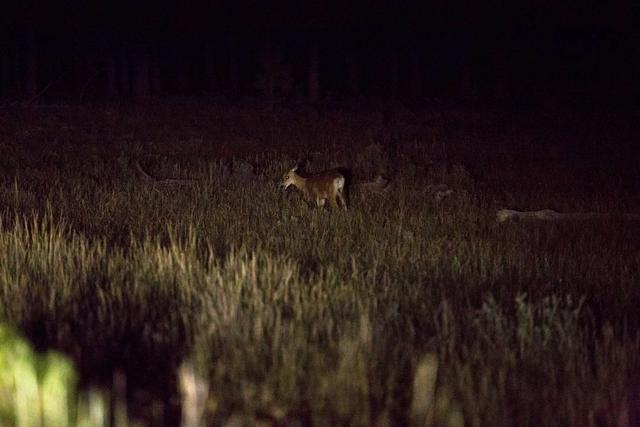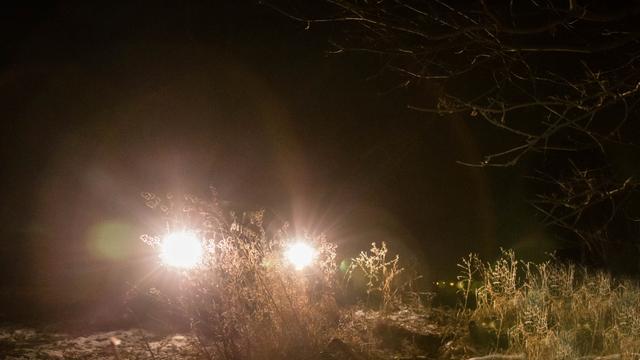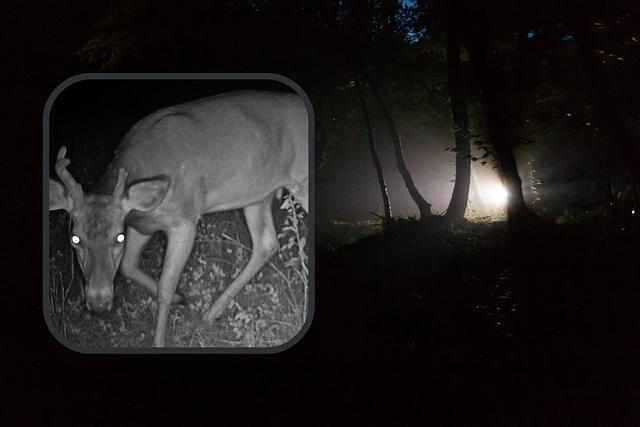“Deer and illuminated objects can be a dangerous combination. Discover the legality surrounding shining lights at deer and gain insight into the potential consequences of this action in our informative guide.”
Table of Contents
- Understanding the Legality of Shining Lights at Deer: What You Need to Know
- Is It Against the Law to Shine a Light at Deer? Exploring Hunting Regulations
- The Legal Implications of Jacklighting: Shining Lights at Deer
- Nighttime Hunting Restrictions: Can You Shine a Light at Deer?
- Navigating State Laws: Is Shining a Light at Deer Illegal?
- Spotlighting and Deer Hunting: Unraveling the Legalities
Understanding the Legality of Shining Lights at Deer: What You Need to Know
What is jacklighting and why is it illegal in some areas?
Jacklighting refers to the practice of shining a light into a forest or field at night in order to locate animals for hunting purposes. This can involve using car headlights, spotlights, searchlights, or other types of lights, either mounted on a vehicle or not. The purpose of jacklighting is to temporarily blind the animals, causing them to freeze in place and making it easier for hunters to kill them.
However, jacklighting is considered illegal in certain areas due to several reasons. Firstly, it is seen as unsporting because it gives hunters an unfair advantage over the animals. By blinding them with lights, the animals are unable to flee or defend themselves properly. Secondly, jacklighting can be dangerous as hunters may not have clear visibility beyond their targeted animal. This can lead to accidental shootings or injuries if other people or objects are present within the vicinity.
The specific laws and regulations surrounding jacklighting
Different states have varying laws and definitions regarding jacklighting and hunting at night. For example, in Indiana, there are specific regulations that define the prohibited activity of jacklighting. These laws aim to protect wildlife and ensure fair hunting practices.
Similarly, New Jersey has its own legislation that prohibits jacklighting and specifies the consequences for violating state hunting regulations. It is important for hunters to familiarize themselves with these laws in order to avoid legal penalties.
Furthermore, some states have made hunting at night illegal altogether, regardless of whether spotlighting is being used or not. This blanket ban aims to prevent any potential harm caused by nighttime hunting activities.
In addition to these regulations, certain states also specify which types of animals may be hunted with spotlights at night. This helps to control and manage the hunting of specific species, ensuring their conservation and population stability.
Overall, understanding the legality of shining lights at deer or any other animals is crucial for hunters to engage in responsible and legal hunting practices. It is important to respect wildlife and adhere to the laws and regulations set by each state to ensure the preservation of natural habitats and the sustainability of animal populations.
Is It Against the Law to Shine a Light at Deer? Exploring Hunting Regulations
The Practice of Jacklighting
Jacklighting is the act of shining a light into a forest or field at night in order to locate animals for hunting purposes. This practice involves using car headlights, spotlights, searchlights, or other types of lights, either mounted on a vehicle or not. The purpose of jacklighting is to temporarily blind the animals and cause them to freeze in place, making it easier for hunters to kill them. However, this practice is considered unsporting and dangerous in many areas.
Legality and Definitions
In some regions, jacklighting is illegal due to its perceived unsporting nature and potential risks. Laws that prohibit jacklighting often have specific definitions of the prohibited activity. For instance, in Indiana, the law defines jacklighting as shining a light from a vehicle while possessing hunting equipment or firearms. Similarly, in New Jersey, the law states that it is unlawful to shine any light in fields or forests where wildlife may be found during specified periods.
Additionally, hunting at night is illegal in certain states regardless of whether jacklighting is involved. Some states also specify which types of animals can be hunted using spotlights at night. These regulations aim to protect wildlife populations and ensure fair hunting practices.
It is crucial for hunters to familiarize themselves with local hunting regulations before engaging in any activities involving shining lights at deer or other animals. Understanding these laws helps ensure ethical and legal hunting practices while promoting conservation efforts.
The Legal Implications of Jacklighting: Shining Lights at Deer

Illegal and Unsporting Practice
Jacklighting, also known as spotlighting or shining, involves the use of lights to temporarily blind animals, making them easier targets for hunters. However, this practice is considered illegal in many areas due to its unsporting nature. The purpose of hunting is often seen as a fair and ethical pursuit, where the hunter must rely on their skills and knowledge to track and kill their prey. Jacklighting goes against these principles by using artificial means to gain an unfair advantage over the animals.
Furthermore, jacklighting is also deemed dangerous because it impairs the hunter’s ability to see beyond the targeted animal. This can lead to accidental shootings or injuries if other hunters or individuals are present in the vicinity. As a result, laws have been put in place in various states to prohibit jacklighting and protect both wildlife and human safety.
Legal Definitions and Restrictions
In states where jacklighting is illegal, specific definitions of the prohibited activity are outlined in the law. For example, in Indiana, the law clearly defines jacklighting as shining a light from a vehicle while possessing hunting equipment or firearms with intent to locate or take wildlife illegally. Similarly, New Jersey’s law explicitly states that using any artificial light while possessing weapons for hunting purposes is forbidden.
Moreover, some states have also implemented restrictions on nighttime hunting altogether, regardless of whether jacklighting is involved. This ensures that hunting activities only take place during daylight hours when visibility is optimal and reduces the risks associated with nighttime hunting.
In addition to legal definitions and restrictions on jacklighting itself, certain states may specify which types of animals can be hunted using spotlights at night. These regulations aim to protect endangered species or limit excessive hunting practices that could disrupt ecosystems.
Overall, the legal implications of jacklighting are clear: it is considered an illegal and unsporting practice in many areas. By enforcing these laws, authorities aim to preserve the integrity of hunting as a fair and ethical activity, while also prioritizing wildlife conservation and human safety.
Nighttime Hunting Restrictions: Can You Shine a Light at Deer?

Understanding Jacklighting and its Legal Implications
Nighttime hunting, specifically the practice of jacklighting, involves shining a light into a forest or field to locate animals for hunting purposes. This technique temporarily blinds the animals, making them easier targets for hunters. However, jacklighting is considered unsporting and dangerous in many areas due to various reasons. Firstly, it poses risks to both hunters and innocent bystanders as they may not have clear visibility beyond the targeted animal. Secondly, it disrupts natural wildlife behavior and can negatively impact ecosystems. As a result, several states have implemented laws that explicitly prohibit jacklighting.
In Indiana, for instance, the law defines jacklighting as the use of artificial light to spot or locate wildlife while in possession of firearms or other weapons capable of killing animals. Similarly, New Jersey’s legislation also prohibits spotlighting or shining lights on wildlife while having firearms or weapons ready for use. These laws aim to protect the welfare of animals and ensure fair hunting practices.
Furthermore, it is important to note that hunting at night may be illegal even without the use of spotlights in certain states. The restrictions vary from state to state, with some specifying which types of animals can be hunted using spotlights during nighttime hours.
To summarize, jacklighting is a controversial practice that is illegal in many states due to its perceived lack of fairness and potential dangers. The specific definitions and regulations surrounding this activity differ between states but generally aim to preserve wildlife populations and promote ethical hunting practices.
Sources:
– Indiana Department of Natural Resources: Hunting & Trapping Guide
– New Jersey Division of Fish and Wildlife: 2021-2022 Hunting & Trapping Digest
Shining a light at deer, also known as jacklighting, is a controversial practice that is subject to varying state laws across the United States. In some states, such as Indiana, jacklighting is considered illegal due to its unsporting nature and potential danger. The purpose of shining a light into a forest or field at night is to temporarily blind the animals, making them easier targets for hunters. This can be done using car headlights, spotlights, searchlights, or other types of lights.
The specific definition and regulations surrounding jacklighting vary from state to state. For example, in New Jersey, the law explicitly prohibits this activity. However, it’s important to note that hunting at night may be illegal in some states regardless of whether or not a spotlight is being used. Some states also specify which types of animals may be hunted with spotlights at night.
The enforcement of these laws falls under the jurisdiction of conservation officers or other law enforcement agencies responsible for overseeing hunting regulations. Violating state hunting regulations by engaging in jacklighting can result in citations and penalties.
It’s worth mentioning that opinions on jacklighting are divided. Supporters argue that it helps control animal populations and aids in wildlife management efforts. However, opponents view it as an unfair and unethical practice that disrupts natural behavior patterns and poses risks to both humans and animals.
In conclusion, if you are considering using a light to hunt deer or any other animals at night, it is crucial to familiarize yourself with the specific laws and regulations in your state regarding jacklighting or spotlighting. Understanding these laws will ensure you stay within legal boundaries while engaging in hunting activities and contribute to responsible wildlife management practices.
Spotlighting and Deer Hunting: Unraveling the Legalities

What is spotlighting?
Spotlighting, also known as jacklighting, is a hunting practice where hunters use artificial lights to illuminate animals at night. This temporarily blinds the animals, making them easier targets for hunters. Spotlighting can be done using car headlights, spotlights, searchlights, or other types of lights mounted on vehicles or held by hand.
The legalities of spotlighting
The legality of spotlighting varies from state to state. In some areas, jacklighting is considered illegal due to concerns about its unsporting nature and the potential dangers it poses. Hunters engaging in this activity may face penalties for violating hunting regulations.
In states where jacklighting is prohibited, laws often provide specific definitions of the prohibited activity. For instance, in Indiana and New Jersey, there are clear guidelines outlining what constitutes illegal spotlighting. Additionally, some states have laws that prohibit hunting at night altogether, regardless of whether a spotlight is being used or not.
Types of animals targeted
Certain states specify which types of animals can be hunted with spotlights at night. This means that while spotlighting may be allowed for certain species, it could be illegal for others. The intention behind these regulations is to ensure responsible hunting practices and protect vulnerable wildlife populations.
It’s important for hunters to familiarize themselves with the specific laws and regulations regarding spotlighting in their respective states before engaging in this activity. By doing so, they can ensure they are acting within the bounds of the law and contributing to sustainable hunting practices.
In conclusion, shining a light at a deer is generally considered illegal in most jurisdictions. This act can disrupt their natural behavior, cause unnecessary stress and potentially lead to accidents on the road. It is essential to respect wildlife and adhere to laws protecting them for their well-being and the safety of all involved.








































